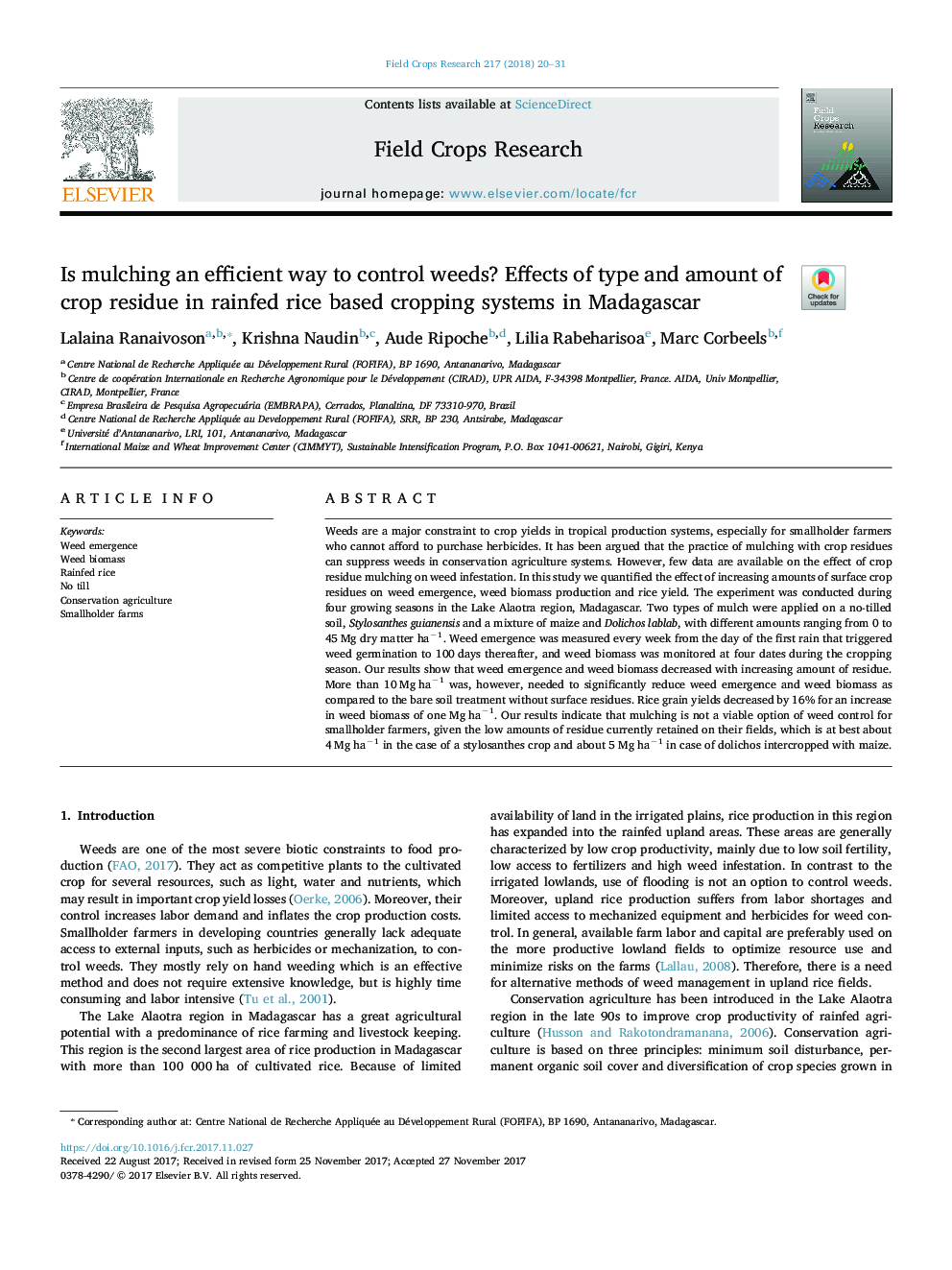| Article ID | Journal | Published Year | Pages | File Type |
|---|---|---|---|---|
| 8879384 | Field Crops Research | 2018 | 12 Pages |
Abstract
Weeds are a major constraint to crop yields in tropical production systems, especially for smallholder farmers who cannot afford to purchase herbicides. It has been argued that the practice of mulching with crop residues can suppress weeds in conservation agriculture systems. However, few data are available on the effect of crop residue mulching on weed infestation. In this study we quantified the effect of increasing amounts of surface crop residues on weed emergence, weed biomass production and rice yield. The experiment was conducted during four growing seasons in the Lake Alaotra region, Madagascar. Two types of mulch were applied on a no-tilled soil, Stylosanthes guianensis and a mixture of maize and Dolichos lablab, with different amounts ranging from 0 to 45 Mg dry matter haâ1. Weed emergence was measured every week from the day of the first rain that triggered weed germination to 100 days thereafter, and weed biomass was monitored at four dates during the cropping season. Our results show that weed emergence and weed biomass decreased with increasing amount of residue. More than 10 Mg haâ1 was, however, needed to significantly reduce weed emergence and weed biomass as compared to the bare soil treatment without surface residues. Rice grain yields decreased by 16% for an increase in weed biomass of one Mg haâ1. Our results indicate that mulching is not a viable option of weed control for smallholder farmers, given the low amounts of residue currently retained on their fields, which is at best about 4 Mg haâ1 in the case of a stylosanthes crop and about 5 Mg haâ1 in case of dolichos intercropped with maize.
Related Topics
Life Sciences
Agricultural and Biological Sciences
Agronomy and Crop Science
Authors
Lalaina Ranaivoson, Krishna Naudin, Aude Ripoche, Lilia Rabeharisoa, Marc Corbeels,
